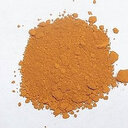Molecularly Characterized Solvent Extracts and Saponins from Polygonum hydropiper L. Show High Anti-Angiogenic, Anti-Tumor, Brine Shrimp, and Fibroblast NIH/3T3 Cell Line Cytotoxicity.
Từ khóa
trừu tượng
Polygonum hydropiper is used as anti-cancer and anti-rheumatic agent in folk medicine. This study was designed to investigate the anti-angiogenic, anti-tumor, and cytotoxic potentials of different solvent extracts and isolated saponins. Samples were analyzed using GC, Gas Chromatography-Mass Spectrometry (GC-MS) to identify major and bioactive compounds. Quantitation of antiangiogenesis for the plant's samples including methanolic extract (Ph.Cr), its subsequent fractions; n-hexane (Ph.Hex), chloroform (Ph.Chf), ethyl acetate (Ph.EtAc), n-Butanol (Ph.Bt), aqueous (Ph.Aq), saponins (Ph.Sp) were performed using the chick embryo chorioallantoic membrane (CAM) assay. Potato disc anti-tumor assay was performed on Agrobacterium tumefaciens containing tumor inducing plasmid. Cytotoxicity was performed against Artemia salina and mouse embryonic fibroblast NIH/3T3 cell line following contact toxicity and MTT cells viability assays, respectively. The GC-MS analysis of Ph.Cr, Ph.Hex, Ph.Chf, Ph.Bt, and Ph.EtAc identified 126, 124, 153, 131, and 164 compounds, respectively. In anti-angiogenic assay, Ph.Chf, Ph.Sp, Ph.EtAc, and Ph.Cr exhibited highest activity with IC50 of 28.65, 19.21, 88.75, and 461.53 μg/ml, respectively. In anti-tumor assay, Ph.Sp, Ph.Chf, Ph.EtAc, and Ph.Cr were most potent with IC50 of 18.39, 73.81, 217.19, and 342.53 μg/ml, respectively. In MTT cells viability assay, Ph.Chf, Ph.EtAc, Ph.Sp were most active causing 79.00, 72.50, and 71.50% cytotoxicity, respectively, at 1000 μg/ml with the LD50 of 140, 160, and 175 μg/ml, respectively. In overall study, Ph.Chf and Ph.Sp have shown overwhelming results which signifies their potentials as sources of therapeutic agents against cancer.



